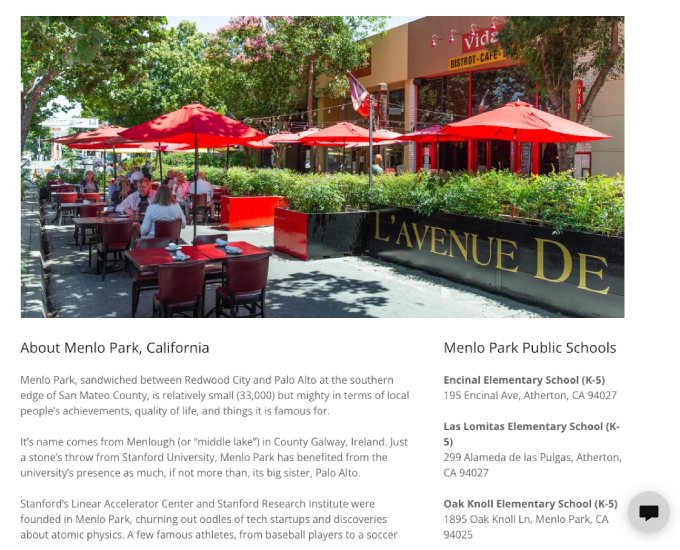The practice of real estate farming has proven to be a tried-and-true method for concentrating marketing efforts in specific areas. This technique empowers agents to establish their presence within a local community firmly. Combining farming in real estate efforts with a keen understanding of real estate market dynamics allows agents to foster deep connections with prospective clients. Whether you’re a seasoned professional or embarking on this concept, our guide equips you with the tools and resources required to cultivate a flourishing local market presence that yields lasting results.
What Is Real Estate Farming?
Real estate farming is a strategic marketing approach that involves concentrating marketing efforts on a specific geographic area or neighborhood to generate leads. This method focuses on cultivating long-term relationships within a defined target area, allowing real estate professionals to become recognized experts and trusted advisors in that community. By delivering valuable information and services consistently to residents and potential clients in the chosen farm area, farming in real estate will foster brand loyalty, boost referrals, and ultimately drive successful transactions.
1. Understanding Target Area Region & Demographics
When embarking on a real estate farming journey, the first crucial step is to consider your region and demographics. Your success hinges on understanding the area you plan to farm. Begin by researching local demographics, including population size, age groups, income levels, and lifestyle preferences. This data will help you tailor your marketing efforts to resonate with your target audience’s specific needs and desires.
Things to consider when selecting an area to farm real estate:
- Property type: Consider the types of properties prevalent in the area, such as single-family homes, condos, apartments, or commercial properties. Marketing strategies for single-family homes may differ significantly from those for commercial properties.
- Population demographics: Analyze the demographics of the population within the area, including age groups, income levels, and family sizes. For example, if the area has a high number of young families, you might want to focus on schools and family-friendly amenities.
- Amenities and services: Assess the availability of amenities and services in the area, like nearby schools, parks, shopping centers, healthcare facilities, and public transportation. This consideration is vital because it allows you to highlight the advantages of living in the area and promote the convenience and lifestyle benefits it offers.
- Competition: Evaluate the level of competition among real estate professionals in the chosen area. A highly competitive market may require more creative and aggressive marketing strategies, while a less saturated market may offer opportunities for differentiation and easier lead generation.
- Community culture: Explore the culture and sense of community within the area. Understanding the local culture helps you integrate seamlessly into the community, build trust with residents, and position yourself as a valued member of the neighborhood.
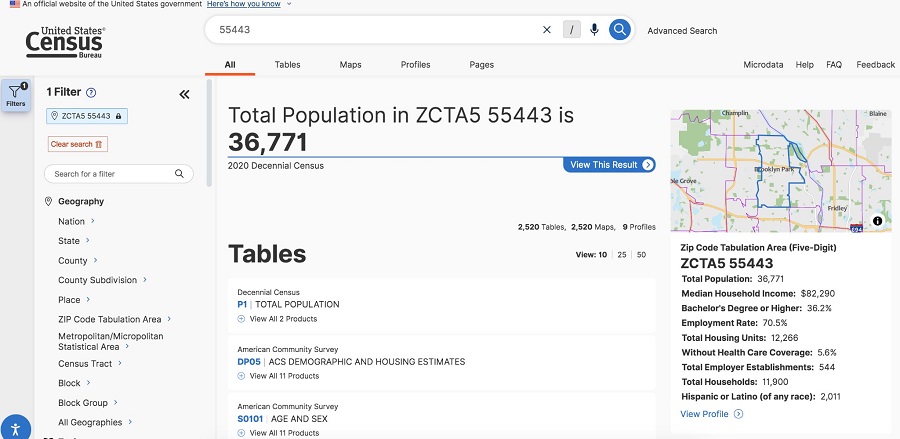
ZIP code data (Source: Census Bureau Search)
Real estate agents have various sources to access valuable demographic data. They can begin by exploring the United States Census Bureau’s extensive repository that can provide information on population, income, education, and housing. Online mapping tools, such as Google Maps and libraries, are accessible resources, and the local Chambers of Commerce office can provide valuable local insights. Agents may even want to look at their Realtor associations and state board organizations, which may offer resources. Accessing and verifying data from these sources empowers real estate professionals to make informed decisions and better serve their clients.
2. Find Areas of Personal Preferences & Interests
Your personal preferences and interests can play a significant role in your real estate farming success. Consider what aspects of real estate resonate with you the most. Perhaps you are drawn to a particular neighborhood or type of property, or you have a passion for historic homes, modern condos, or waterfront properties. Evaluating your personal preferences allows you to align your farming efforts with your interests, making the work more enjoyable and authentic.
Think about your networking abilities and connections within the community. Your existing relationships can be valuable assets when establishing yourself as a local expert. Whether you’re passionate about local schools, parks, or cultural events, your genuine enthusiasm will shine through in your marketing efforts. By blending your interests with your real estate agent farming strategy, you’ll create a unique and compelling approach that resonates with potential clients.
3. Defining Farming Boundaries With Precision
When defining your farming boundaries, take into account factors that influence homebuyer neighborhood choice. Consider aspects such as school quality, proximity to public transportation, local amenities like parks and shopping centers, safety, and the overall character of the neighborhood. By aligning your farming boundaries with these critical factors, you can ensure that your marketing strategies align with the priorities and preferences of your target audience.
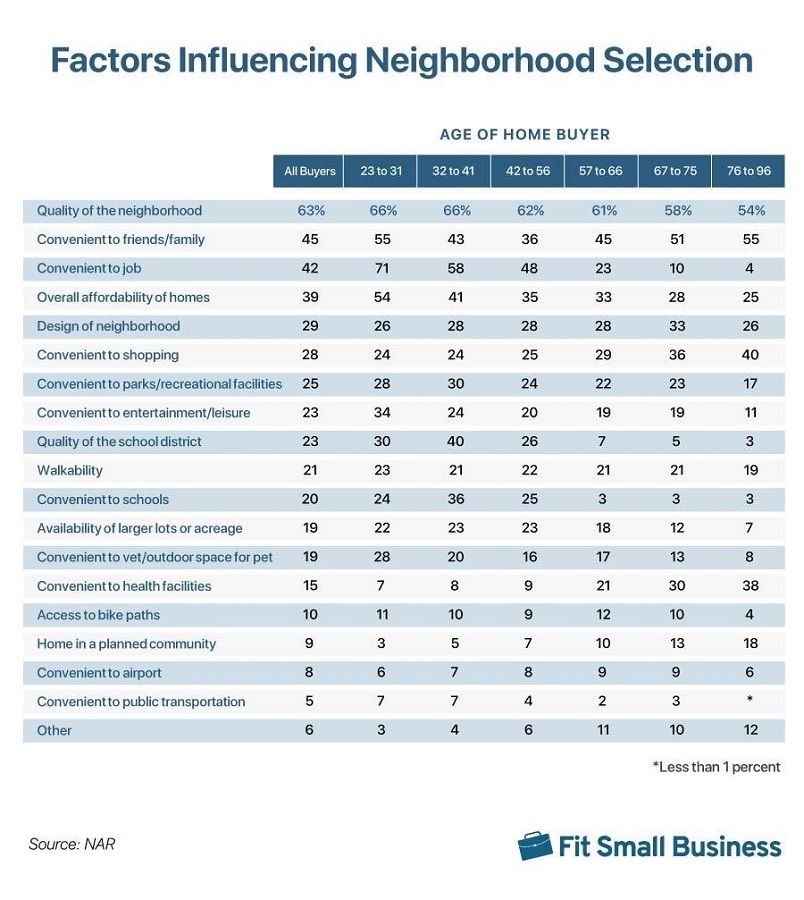
Real estate farming boundaries should be manageable and scalable. For example, if you’re selecting your farming area by ZIP code, select the entire ZIP code rather than defining a boundary by physical street addresses. By narrowing your focus to a well-defined geographic area, you can allocate your time and resources more efficiently, ensuring that your marketing strategies have a more significant impact.
4. Researching Sales Activity in Potential Farm Areas
Before committing to your farm area, understanding the past performance of the area will help you anticipate future opportunities and challenges. This knowledge will enable you to differentiate yourself and offer unique value to potential clients. By researching the sales activity in an area, you’ll be well-prepared to make informed decisions about your farm area.
One of the primary sources for locating sales data is the local multiple listing service (MLS) database. This database provides comprehensive information on properties listed for sale, recently sold properties, and their sale prices. Local government records like the New York Department of Finance are also invaluable resources, offering historical sales data, sales prices, and transaction records.
Data that should be evaluated when selecting a farming area:
- Historical sales data: Analyze historical sales data for the area, including the number of properties sold over the past few years. Look for trends like increasing or decreasing sales volume to understand the market’s overall health.
- Average sales price: Examine the average sales price of properties in the farming area. This data helps you gauge the price range of homes in the market and identify potential buyers’ affordability.
- Days on market (DOM): The average number of days a property spends on the market can provide insights into market activity. A shorter DOM may indicate a competitive and active market, while a longer DOM may suggest slower sales.
- List-to-sale price ratio: Determine the ratio between the listing price and the actual sales price for properties in the area. This ratio can reveal the negotiation dynamics and the strength of buyer-seller interactions.
- Market inventory: Assess the current inventory of homes for sale in the farming area. High inventory may indicate a buyer’s market, while low inventory may signify a seller’s market.
- Price trends: Look at price trends over time. Identify whether property values are appreciating, depreciating, or remaining stable. This information can help you advise clients and make informed investment decisions.
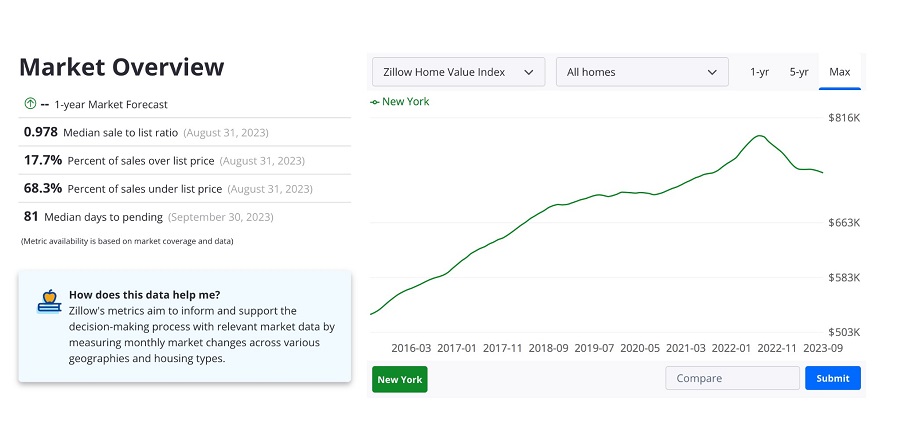
Market data overview (Source: Zillow)
With its user-friendly online platform, Zillow provides an accessible and intuitive interface for accessing a wealth of sales information. Agents can explore projected home values, recent sale prices, and transaction history in a straightforward manner. Zillow’s comprehensive property database of listings empowers agents to stay informed about market trends and property values in their chosen farming areas. The platform’s property value estimates and neighborhood insights offer further depth, aiding agents in crafting informed marketing strategies and providing clients with valuable information.
5. Implementing Real Estate Farming Marketing Strategies
Once you’ve considered a region’s demographics, personal interests, and researched sales activity, it’s time to finalize your farm area selection. Ensure that the chosen area aligns with your expertise and passion, as this will drive your commitment and dedication to the farming process.
With your farm area selected, it’s time to put your farming in real estate marketing strategies into action. Learning how to farm a neighborhood by combining online and offline tactics to establish your local presence. Online tools, such as social media, email marketing, and a well-optimized website, can help you reach a broader audience. Ensure your online content is informative and engaging, offering valuable insights about the local real estate market. Here are some real estate farming ideas:
Build an Online Presence
Establish a strong online presence through social media, an optimized website, and online listings. This should be done on popular platforms like Facebook, Instagram, and LinkedIn. Utilizing your company website, as well as building a personalized website with real estate community pages specializing in your farm area, will set you apart from the competition.
Create Engaging Content
Create informative and engaging online content that provides insights about the local real estate market. Harness the power of email marketing to maintain a strong connection with potential leads by providing them with valuable insights into the local market. Send targeted direct mail campaigns to residents within your farm area, offering tailored information that speaks directly to their needs.
These emails can include information about buying and selling a home, holiday greetings, a newsletter highlighting local events, or real estate market statistics specific to the area. No matter what you send, make sure it is content that is informative, engaging, and focused on your farm area.

Make Personable Connections
Building personable connections is a core marketing strategy for successful real estate farming. By actively participating and engaging in neighborhood events, you have the opportunity to forge genuine relationships with local residents. It showcases your commitment to the area’s welfare, reinforcing your role as a dependable local expert. Lastly, networking with local businesses and residents is the cornerstone of becoming a recognized figure within the community.
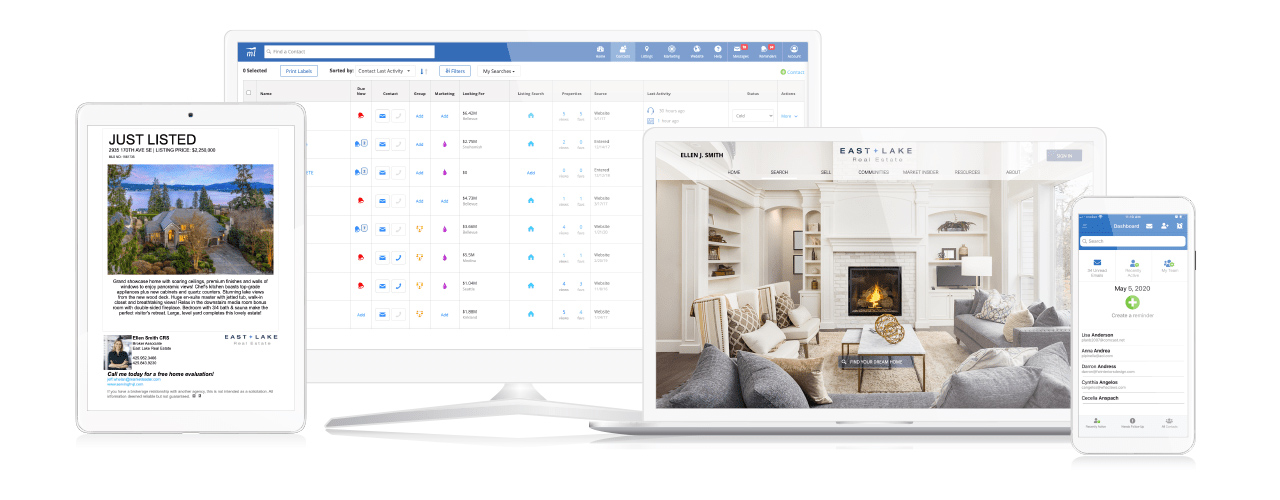
Professional dashboard (Source: Fit Small Business)
Market Leader is a powerful ally for real estate professionals looking to excel in real estate farming. This platform offers tools and features designed to streamline and enhance farming efforts. With its robust customer relationship management (CRM) and lead generation system, agents can manage and nurture leads within their chosen farm area efficiently.
The platform’s automated marketing capabilities allow for targeted email campaigns, ensuring that the right messages reach the right audience at the right time. Additionally, Market Leader offers customizable websites and landing pages, which are vital for establishing a strong online presence.
Frequently Asked Questions (FAQs)
Real estate farming is a patient endeavor. Typically, it takes several months, if not a year or more, to see significant results. Consistency is critical. Building trust and recognition within a community takes time. It’s essential to set realistic expectations and commit to the long-term nature of farming. While results may not be immediate, the investment can yield a sustainable stream of leads and referrals over time. Agents who persist in their efforts often find that the rewards are well worth the patience.
Real estate agents have access to various tools and resources to streamline their farming efforts. CRM software can help you organize and manage your contacts and interactions with leads. Marketing automation platforms allow you to schedule and automate email campaigns and social media posts. Data analytics tools can help you track the effectiveness of your marketing efforts.
Additionally, consider leveraging geographic information systems (GIS) software for detailed mapping and analysis of your farm area. These resources can empower you to make data-driven decisions and efficiently manage your real estate farming strategy.
Selecting the right farm area requires careful consideration. Start by researching the demographics of potential areas, including population size, age groups, income levels, and lifestyle preferences. Additionally, consider your interests and expertise. Aligning your interests with the area’s features can make your marketing efforts more authentic and enjoyable. Analyze historical sales data to identify neighborhoods with growth potential and stable property values. Ultimately, your chosen farm area should be a place where you can invest your time, effort, and marketing resources for the long term.
Bottom Line
Real estate farming is a targeted marketing approach that can yield significant results for real estate professionals seeking to establish a strong local presence and generate leads. Implementing a diverse range of marketing strategies, both online and offline, is crucial for maintaining a consistent presence and building trust within the community. By following these six strategic steps, real estate professionals can effectively cultivate their farm area and reap the rewards of a thriving local market presence.
